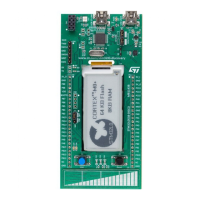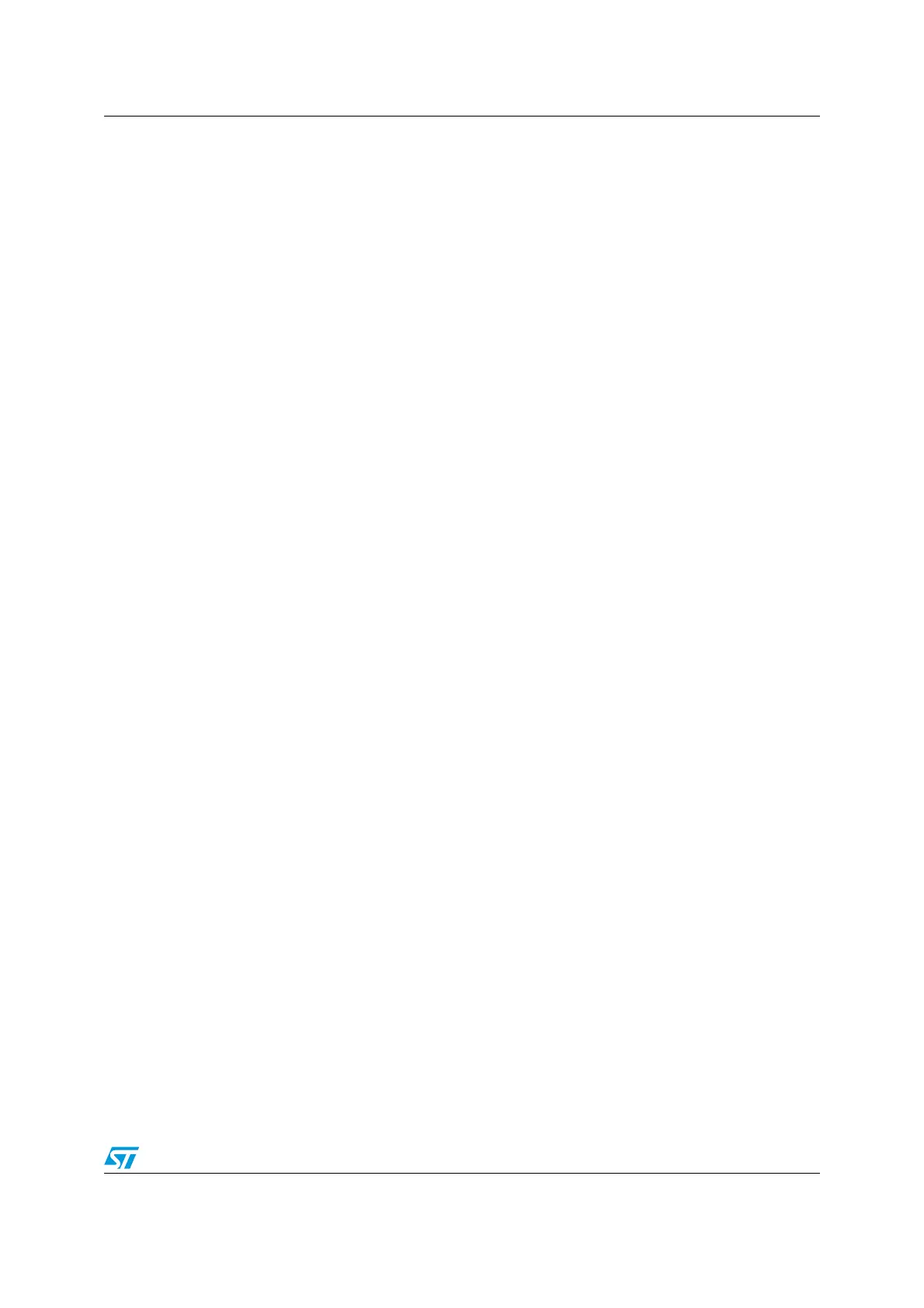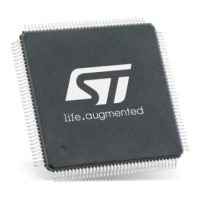PM0215 The STM32 Cortex-M0 processor
Doc ID 022979 Rev 1 25/91
2.3.5 Exception priorities
As Table 12 on page 23 shows, all exceptions have an associated priority, with:
● A lower priority value indicating a higher priority
● Configurable priorities for all exceptions except Reset, Hard fault, and NMI.
If software does not configure any priorities, then all exceptions with a configurable priority
have a priority of 0. For information about configuring exception priorities see:
● System handler priority registers (SHPRx) on page 83
● Interrupt priority register (IPR0-IPR7) on page 73
Configurable priority values are in the range 0-192, in steps of 64. This means that the
Reset, Hard fault, and NMI exceptions, with fixed negative priority values, always have
higher priority than any other exception.
For example, assigning a higher priority value to IRQ[0] and a lower priority value to IRQ[1]
means that IRQ[1] has higher priority than IRQ[0]. If both IRQ[1] and IRQ[0] are asserted,
IRQ[1] is processed before IRQ[0].
If multiple pending exceptions have the same priority, the pending exception with the lowest
exception number takes precedence. For example, if both IRQ[0] and IRQ[1] are pending
and have the same priority, then IRQ[0] is processed before IRQ[1].
When the processor is executing an exception handler, the exception handler is preempted
if a higher priority exception occurs. If an exception occurs with the same priority as the
exception being handled, the handler is not preempted, irrespective of the exception
number. However, the status of the new interrupt changes to pending.
2.3.6 Exception entry and return
Descriptions of exception handling use the following terms:
Preemption When the processor is executing an exception handler, an exception can
preempt the exception handler if its priority is higher than the priority of the
exception being handled. When one exception preempts another, the
exceptions are called nested exceptions. See Exception entry on page 26
more information.
Return This occurs when the exception handler is completed, and:
● There is no pending exception with sufficient priority to be serviced
● The completed exception handler was not handling a late-arriving
exception.
The processor pops the stack and restores the processor state to the state it
had before the interrupt occurred. See Exception return on page 27 for more
information.
Tail-chaining This mechanism speeds up exception servicing. On completion of an
exception handler, if there is a pending exception that meets the
requirements for exception entry, the stack pop is skipped and control
transfers to the new exception handler.

